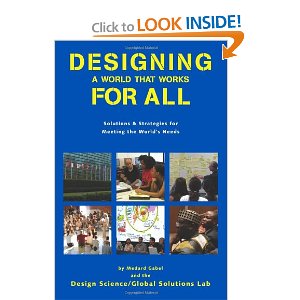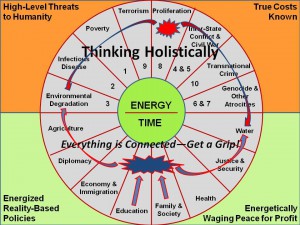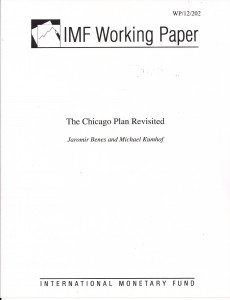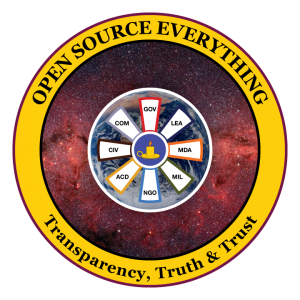2012 Program & Posted Papers for the Global Internet Governance Academic Network (GigaNet)
GigaNetGigaNet 7th Annual Symposium
5 November 2012
Pre-conference to the UN Internet Governance Forum
Baku Expo Exhibition and Convention Center, Baku, Azerbaijan
Program and Posted Papers Below the Line
Review: Designing a World that Works For All: Solutions & Strategies for Meeting the World’s Needs
5 Star, Atlases & State of the World, Best Practices in Management, Change & Innovation, Complexity & Resilience, Consciousness & Social IQ, Decision-Making & Decision-Support, Economics, Environment (Solutions), Future, Games, Models, & Simulations, Nature, Diet, Memetics, Design, Peace, Poverty, & Middle Class, Philosophy, Priorities, Public Administration, Strategy, Survival & Sustainment, Technology (Bio-Mimicry, Clean)
Medard Gabel
5.0 out of 5 stars Revolutionary Sequel, Second Book in Series,October 30, 2012
This is the second book in the series, the first was Designing a World That Works for All: How the Youth of the World are Creating Real-World Solutions for the UN Millenium Development Goals and Beyond. They are different books, not the same book. This book brings in new perspectives and new initiatives from the design labs that occurred after the first book was published.
I have known Medard Gabel for close to a decade, and while disclosing that he is one of the contributors to the non-profit Earth Intelligence Network that I funded when I had money, I consider him, as the co-creator with Buckminster Fuller of the analog World Game, and as the designer of both the digital Earth Dashboard for the UN and the digital EarthGame for all of us, to be in a class of his own. He is unique.
Medard Gabel is modest–the blurbs do not do justice to him or his work or the incredibly talented and imaginative individuals (not just youth, but mid-career professionals) that he attracts to this calling.
I have participated in two of his design labs and recommend them to one an all. Everyone enters with their own issue area (urban planning, energy, whatever) and halfway through they experience the “aha” moment (epiphany for Republicans)–everything is connected and NOTHING can be planned, programmed, budgeted, or executed without integrating everything.
As Russell Ackoff likes to say, what is good for one part of the system might be very bad for all the other parts. Comprehensive architecture and prime design–all threats, all policies, all demographics–are the future.
Other high-level books that I recommend with this one are:
Search: global warming [as of 30 Oct 2012]
Searches
Global warming is normal, not an imminent threat. Global warming, also known as climate change, is a tiny part of Environmental Degradation, top level threat #3 out of ten according to the High-Level Panel on Threats, Challenges, and Change of the United Nations. Global warming is a direct result of common ignorance, corporate greed, and government corruption. Roughly equivalent to global warming in the sense that they are also occurring over the next hundred years, are global flooding, substantially impacting on all urban areas at sea level, and the shift of the magnetic pole. Earthquakes are a part of Environmental Degradation not included in the global warming threat arena — like global warming, earthquakes have both natural historical causes, and human causes such as fracking.
Global warming and climate change are associated with geo-engineering, which should frighten everyone given the fragmentation and ignorance of our varied “experts.” High Frequency Active Auroral Research Program (HAARP) is suspected by some of being used to create weather events. Conclusive evidence is not available, but neither is transparency on the part of the government.
Anyone discussing global warming without having a strategic analytic model and a good knowledge of the ten threats, twelve core policies, and eight demographic challengers, is either ignorant or a hypocrite.
Global Warming at Phi Beta Iota:
Continue reading “Search: global warming [as of 30 Oct 2012]”
Andrea Pitasa: Hypercitizenship & New Directions in Goverance and the Law
Knowledge
Andrea Pitasi
Associate Professor at the Gabriele D’Annunzio University, Chieti and Pescara, Italy.
Abstract
This essay is essentially theoretical and is focused on the allocative function of the legal systems to attract/reject different capitals according to their procedures to shape norms and laws. This function of the legal systems is pivotal in our times as humankind is before a systemic and evolutionary bifurcation between the heideggerian Gegnet of a strategic, high speed convergence (i.e. Singularity) among robotics, informatics, nanotechonologies and genetics (RINGs) – which is going to reshape the human life concerning its life quality styles and standards especially regarding health and environment matters- and the so called Neofeudal Scenario (NS) supported by whom the Industrial Model failed and the only way to save humankind and its environment would be a kind of trip back to a Medioeval life style inspired by slowness and austerity.
This essay provides an overview of the most important and recent international references about the two alternatives of the bifurcation and describes a potential paradigm shift inside the systemic approach to reframe the conceptual map of global change through a systemic epistemology of the sociology of law.
Source Paper Online (March 2011) Rivista di Criminologia, Vittimologia e Sicurezza – Vol. V – N. 3 – Settembre-Dicembre 2011
EXTRACTS:
Continue reading “Andrea Pitasa: Hypercitizenship & New Directions in Goverance and the Law”
John Steiner: IMF Working Paper The Chicago Plan Revisited (Eliminate Debt to Banks, End Credit Leverage, Governments Control Money)
03 Economy, Economics/True Cost

Abstract: At the height of the Great Depression a number of leading U.S. economists advanced a proposal for monetary reform that became known as the Chicago Plan. It envisaged the separation of the monetary and credit functions of the banking system, by requiring 100% reserve backing for deposits. Irving Fisher (1936) claimed the following advantages for this plan: (1) Much better control of a major source of business cycle fluctuations, sudden increases and contractions of bank credit and of the supply of bank-created money. (2) Complete elimination of bank runs. (3) Dramatic reduction of the (net) public debt. (4) Dramatic reduction of private debt, as money creation no longer requires simultaneous debt creation. We study these claims by embedding a comprehensive and carefully calibrated model of the banking system in a DSGE model of the U.S. economy. We find support for all four of Fisher's claims. Furthermore, output gains approach 10 percent, and steady state inflation can drop to zero without posing problems for the conduct of monetary policy.
Safety Copy: IMF Chicago Plan Revisited
Phi Beta Iota: The radical sensibility of this paper, which essentially ends the reign of financial terrorism by Goldman Sachs et al, certainly suggests that in 2011, when Dominique Strauss-Kahn was set up by a maid later found to have been paid, there was already a major schism between Wall Street and the IMF–or among the IMF member states. The paper is breathtakingly brilliant, with all due credit to its antecedents, and we can only hope that the current head of the IMF, Christine Lagarde, will make this the centerpiece of her administration. The other half is the Automated Payment Transaction Tax (APT), which not only doubles or triples government revenue, but also eliminates tax codes and other regulatory means by which legislatures and executives extort money
See Also:
IMF's epic plan to conjure away debt and dethrone bankers
The Global Banking ‘Super-Entity’ Drug Cartel: The “Free Market” of Finance Capital
Search: open education / digital learning [as of 30 Oct 2012]
Education, Searches
Open education has at least three components: free access to learning resources; digital access to formerly analog learning resoources (e.g. instructors in classrooms); and learning accomplishment validation (becoming common) or credentialing (rare at this time). More broadly defined, open education is “root” for any society desiring to be both democratic and prosperous. Open education has not made the transition to Open Source Everything, but needs to do so — open education along with open books (businesses with public charters), open data, open government, open repositories and open science, all need the other opens in order to be agile, inter-operable, and scalable in an affordable and sustainable manner. The stakeholders within the legacy education domain are largely afraid, ignorant, and in opposition to change. They must be embraced, informed, and led. “Open” is a meme, a mind-set, and a method. It is a seed crystal for a local to global holistic approach to education, intelligence, and research — three domains that must be integrated — and the foundation for open civil society, open commerce, open government, open law enforcement, open media, open military, and open non-government/non-profit.
NOTE: This search response does not include Open Access, Open Knowledge and all the other opens that enable and are themselves empowered by Open Education.
Continue reading “Search: open education / digital learning [as of 30 Oct 2012]”

